24. Juli 2020
The Copy Room: Tracing a Local Product in a Globalized World
With the installation The Copy Room the artist and designer Ebru Kurbak created a very special work for the “Global/Local” section of the MAK DESIGN LAB. In her contribution for the MAK-Blog she shares some thoughts on the notions of authenticity and locality of hand-made products today in our overly globalized world.
+++++++
The work titled The Copy Room was created specially for the reinstallation of the MAK Design Lab. In conversation with the Design Lab curators, mischer′traxler studio (Katharina Mischer, Thomas Traxler), Janina Falkner, New Concepts for Learning, MAK and Marlies Wirth, Curator, Digital Culture and MAK Design Collection, and in response to their chosen theme “Global/Local”, I engaged with the intricate story of one particular product for this work: the Hereke carpet of Turkey. These carpets exemplify knowledge and skills that had been tied to precise physical locale, an ideal that is tricky in our day.
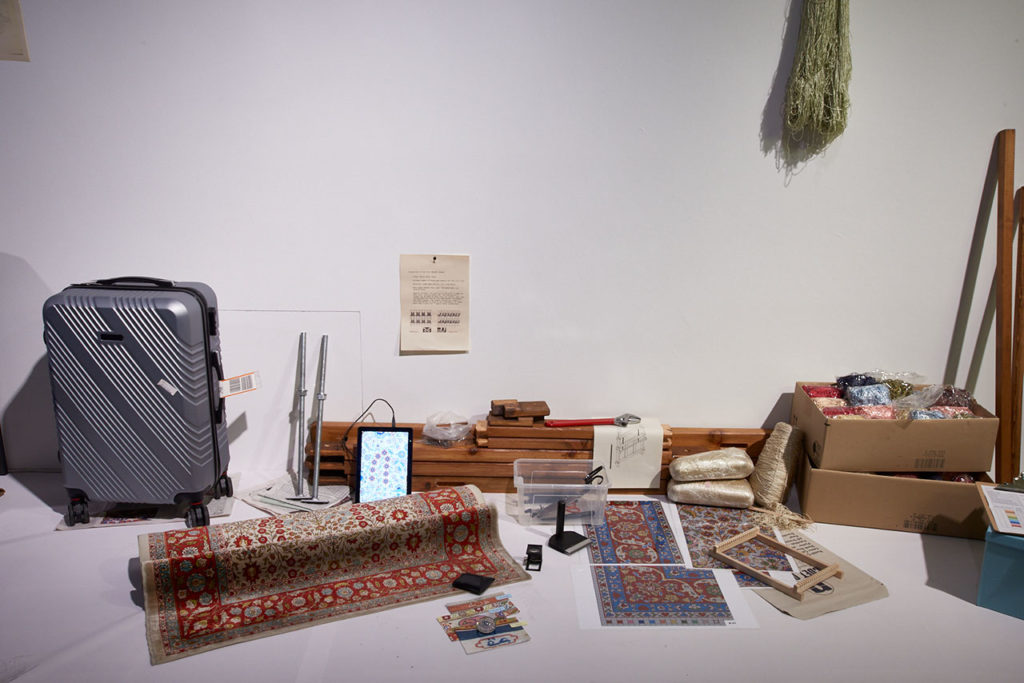
Ebru Kurbak, The Copy Room, 2019, MAK DESIGN LAB
© MAK/Georg Mayer
I conceived and titled the work in reference to the petit and dimly lit room it was intended for, and wanted The Copy Room to reflect the complexity of the notions of authenticity and locality of hand-made products today in our overly globalized world.
A Product with History
Hereke hand-knotted silk carpets were first made in the second half of the 19th century at the Imperial Manufactory of the Ottoman Empire. Located about 60 km away from Istanbul in the little coastal town Hereke, the factory was in charge of decorating the Ottoman palaces with high quality woven fabrics as well as wool and silk carpets. In time, the fine silk carpets woven at this one factory began to imply a certain style that spread to the whole region and the name “Hereke carpet” started to signify a specific type of regional carpet with distinct technical and aesthetic properties.
Hereke silk carpets are typically made of pure high quality silk from Bursa, Turkey. They are extra fine and high-density carpets that contain above a hundred knots per square centimeter and therefore require a single weaver to be committed to weaving a single carpet for many years. As many other oriental rugs did in the 20th century, the Hereke carpet found its way into the Western market as an exquisite and authentic product.
The Chinese Copy
In 2012, the Hereke carpet became the subject of some particular news that spread across Turkish media. According to the reports, the carpets were being copied and distributed to the global markets by Chinese manufacturers. This of course might come as expected to many of us that are aware of the distinctive copy culture in China. But, an interesting detail carried the story beyond a typical case of counterfeit. The town of Hereke in fact no longer officially existed as a municipality in Turkey since 2009 as its people had immigrated to larger cities in Turkey and abroad and Hereke’s status as a “town” had to be terminated due to its low population. The news that spread argued that China not only copied the product but also made use of the inexistence of Hereke on paper and named one of its industrial zones the “Hereke Industrial Zone” to be able to label their products as “Made in Hereke”.
Outsourced Heritage: The “Chinese Hereke”
Had China really copied a town just to be able to label a product? This claim might as well be fiction that was inspired by the recent Chinese practice of copying towns such as Hallstatt and Venice. The existence of Hereke style carpets woven in China, on the other hand, is a fact, and unravels many questions concerning what is “authentic” and what is a “copy” today when it comes to hand-made products.
“Turkish Hereke” or “Chinese Hereke”
Intrigued to find out more about the authentic Hereke and its said copy, I visited an oriental carpet shop in the ninth district of Vienna. When I told the shopkeeper that I was there to see a Hereke carpet, he asked me whether I was interested in a “Turkish Hereke” or a “Chinese Hereke.” Already surprised to learn that the “Chinese Hereke” was a thing, I also found out that the Chinese carpet he had at hand was relatively expensive compared to the authentic version. It was woven in higher density, although the Chinese version did not “feel the same” according to the expert. It was unquestionably a high quality product, hand-knotted, with pure silk, and by using the Turkish knot.
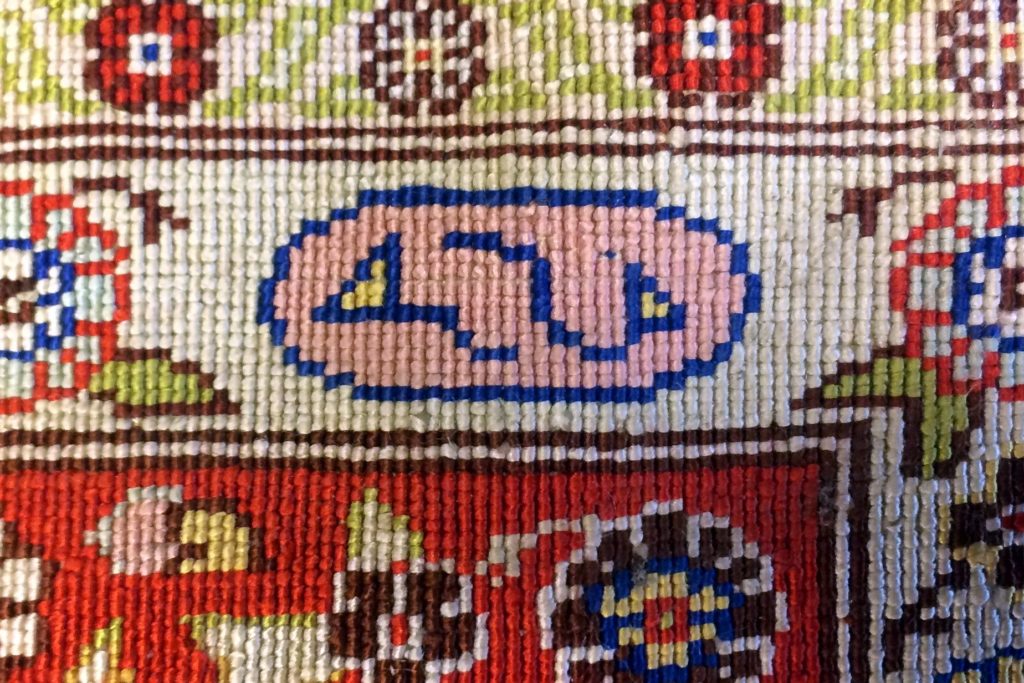
The signature detail from an original Turkish Hereke carpet. (back side)
© Ebru Kurbak
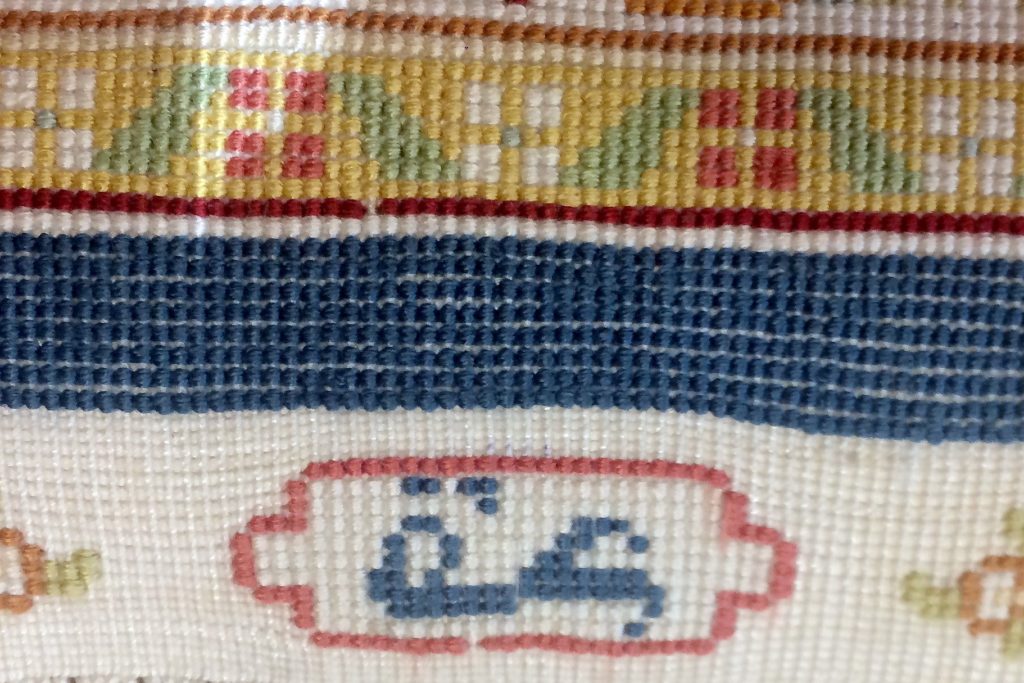
The signature detail from a Hereke style carpet made in China. (back side)
© Ebru Kurbak
But, how did manufacturers in China get to know this relatively niche product from a small town in Turkey, and learn the whole craft to make a decent copy? Digging deeper into the story, I came across people that claimed they witnessed the outsourcing of the Hereke carpets by a few Turkish manufacturers to the Nanyang region in China in the 1980s. To be able to create identical high quality products, these companies apparently sent Turkish weaving instructors to teach Chinese weavers the particular knot and techniques involved in the craft.
Geographical Indication: Freezing a Product in Time and Space
Since 1996, the Hereke carpet has been a registered geographical indication (GI) in Turkey. GIs do intend to protect the intellectual property of local manufacturers, but also imply and define an “ideal” version of a product and evoke the sense that something has to be protected from being replaced by something less authentic and inferior. However, the carpet in question itself is a product of global influences. Silk, first of all, originated in China about 6 000 years ago. The floral patterns in the Hereke carpets, moreover, hold strong Persian influences.
What is a local craft in the age of global human migration?
Tracing the history of this one product opens up more questions than it answers. Is it really possible to identify an “ideal” version of a product, when it comes to hand-made textiles, which had never been fixed in time? If such products are results of centuries long interaction between cultures across the globe, how can it be decided that “now” is the right time to cut the cords and freeze a product in time and in space? And, who gets to decide? What is a local craft in the age of global human migration anyways, when many skillful people are forced to leave their homes?
And, what is authentic and what is a copy in handcrafted products, when copying means having to actually learn the handcraft? Why do we need a product to be authentic, when we know its physical qualities are the same with the original? And, what does this need tell about us consumers in the Western world?
The Copy Room
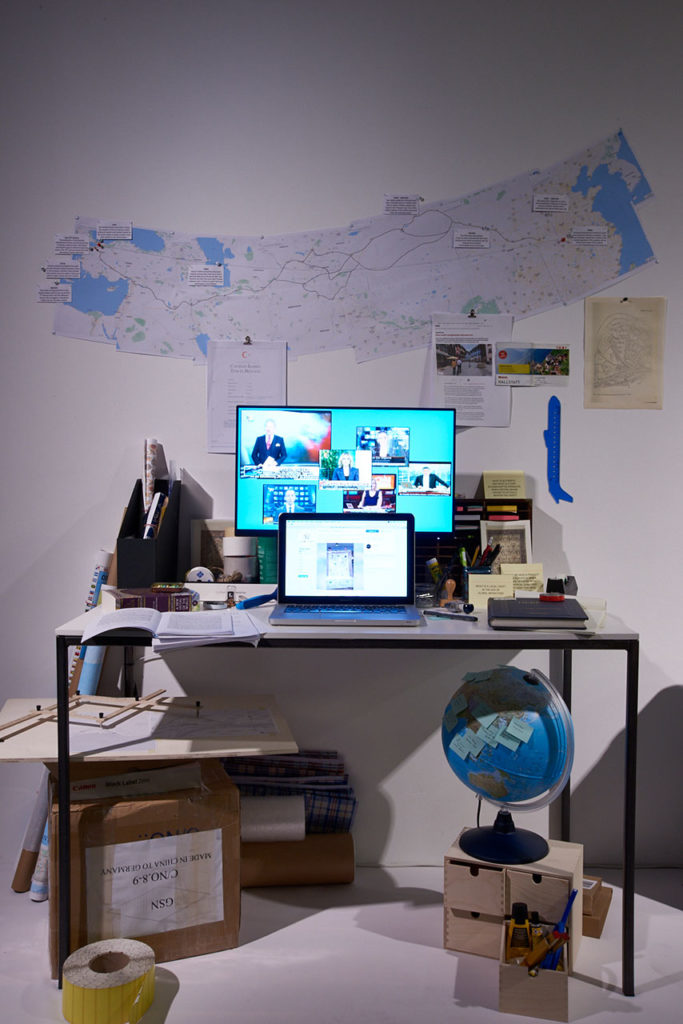
Ebru Kurbak, The Copy Room, 2019
MAK DESIGN LAB
© MAK/Georg Mayer
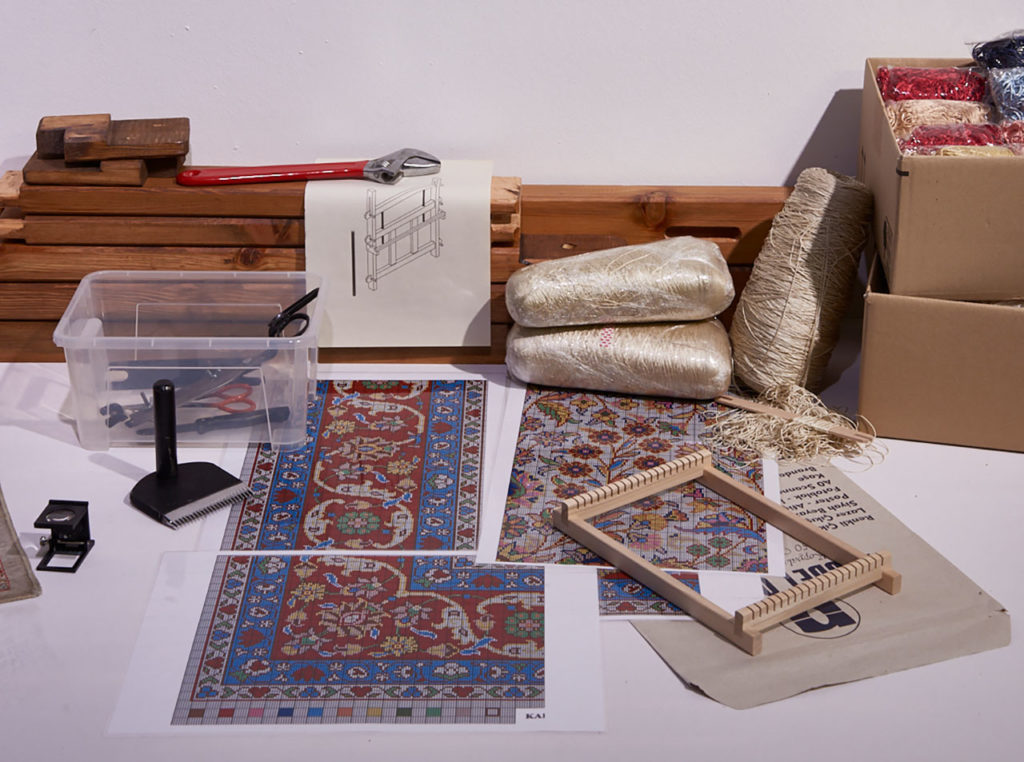
Ebru Kurbak, The Copy Room, 2019
MAK DESIGN LAB
© MAK/Georg Mayer
Inspired by the intricacy of labeling a product of craftsmanship as “authentic” or “local” today, the installation The Copy Room brings together all information, tools and materials necessary to be able to create one Hereke carpet right then and there in the midst of the MAK in Vienna. The only thing needed in addition to what is provided in the installation is the person who has the rare skill, knowledge and craft.
A guest contribution by Ebru Kurbak, artist and designer.




